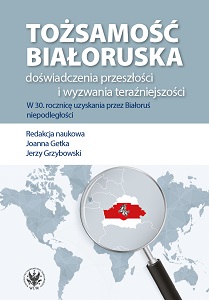Uwarunkowania społeczno-polityczne i kulturowe życia narodowego Białorusinów w Łatgalii podczas okupacji niemieckiej (1941–1944)
Socio-political and cultural conditions of the national life of Belarusians in Latgale during the German occupation (1941–1944)
Author(s): Jerzy Grzybowski
Subject(s): Cultural history, Security and defense, Pre-WW I & WW I (1900 -1919), Interwar Period (1920 - 1939), WW II and following years (1940 - 1949), Post-War period (1950 - 1989), Transformation Period (1990 - 2010)
Published by: Wydawnictwa Uniwersytetu Warszawskiego
Keywords: World War II; German occupation; Latvia; Latgale; Belarusians
Summary/Abstract: Belarusians were one of the largest ethnic groups in Latvia in the interwar period. The main clusters of the Belarusian population were located in the south-eastern part of the country – in Latgale (former Polish Livonia). In the summer of 1941, Latvia was seized by the Wehrmacht and the occupation regime was established. The German occupying authorities, using the principle of “divide et impera”, were willing to give the Belarusians a certain degree of cultural and educational autonomy. In 1941 the Belarusian National Committee (since the spring of 1942: the Belarusian Association) was established in Riga and Dyneburg. The organization of Belarusian education under the German occupation was its priority. In the school years 1941/42 and 1942/43 thirty-five primary schools, two high schools and one agricultural secondary school were opened. Moreover, attempts were made to stimulate artistic and publishing activities. The activities of Belarusians aroused antipathy among local Latvians, who were afraid of an increase in the Belarusian national consciousness in Latgale.
Book: Tożsamość białoruska: doświadczenia przeszłości i wyzwania teraźniejszości
- Page Range: 92-124
- Page Count: 33
- Publication Year: 2021
- Language: Polish
- Content File-PDF

